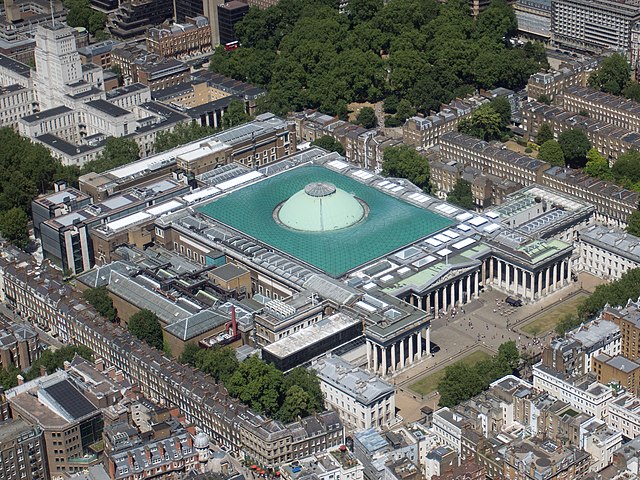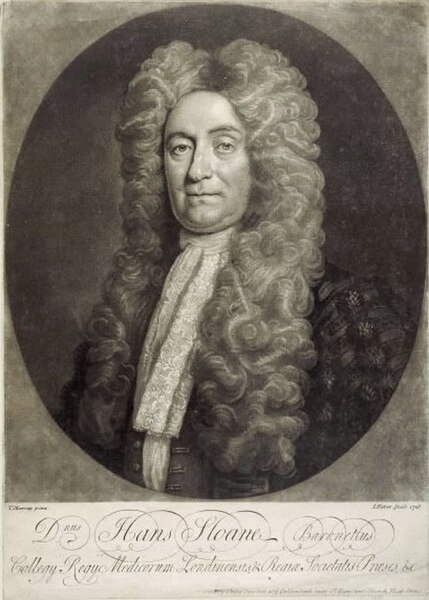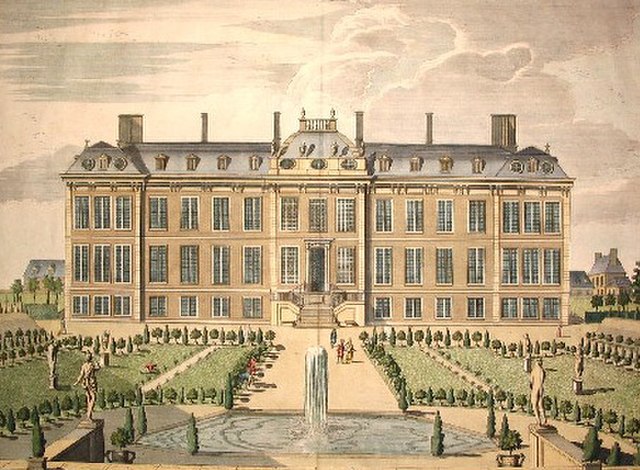Sir Hans Sloane, 1st Baronet, was an Anglo-Irish physician, naturalist, and collector, with a collection of 71,000 items which he bequeathed to the British nation, thus providing the foundation of the British Museum, the British Library, and the Natural History Museum, London. He was elected to the Royal Society at the age of 24. Sloane travelled to the Caribbean in 1687 and documented his travels and findings with extensive publications years later. Sloane was a renowned medical doctor among the aristocracy, and was elected to the Royal College of Physicians at age 27. Though he is credited with the invention of chocolate milk, it is more likely that he learned the practice of adding milk to drinking chocolate while living and working in Jamaica. Streets and places were later named after him, including Hans Place, Hans Crescent, and Sloane Square in and around Chelsea, London – the area of his final residence – and also Sir Hans Sloane Square in Killyleagh, his birthplace in Ulster.

Portrait by Stephen Slaughter
Title page, Sloane's Voyage to Jamaica, 1725
Illustration from critique of the first volume of A voyage to the islands Madera, Barbados, Nieves, S. Christophers and Jamaica, published in Acta Eruditorum, 1710
Sloane, 1736
The British Museum is a public museum dedicated to human history, art and culture located in the Bloomsbury area of London. Its permanent collection of eight million works is the largest in the world. It documents the story of human culture from its beginnings to the present. The British Museum was the first public national museum to cover all fields of knowledge.
Aerial view of the British Museum
The Great Court was developed in 2001 and surrounds the original Reading Room.
Sir Hans Sloane
Montagu House, c. 1715








